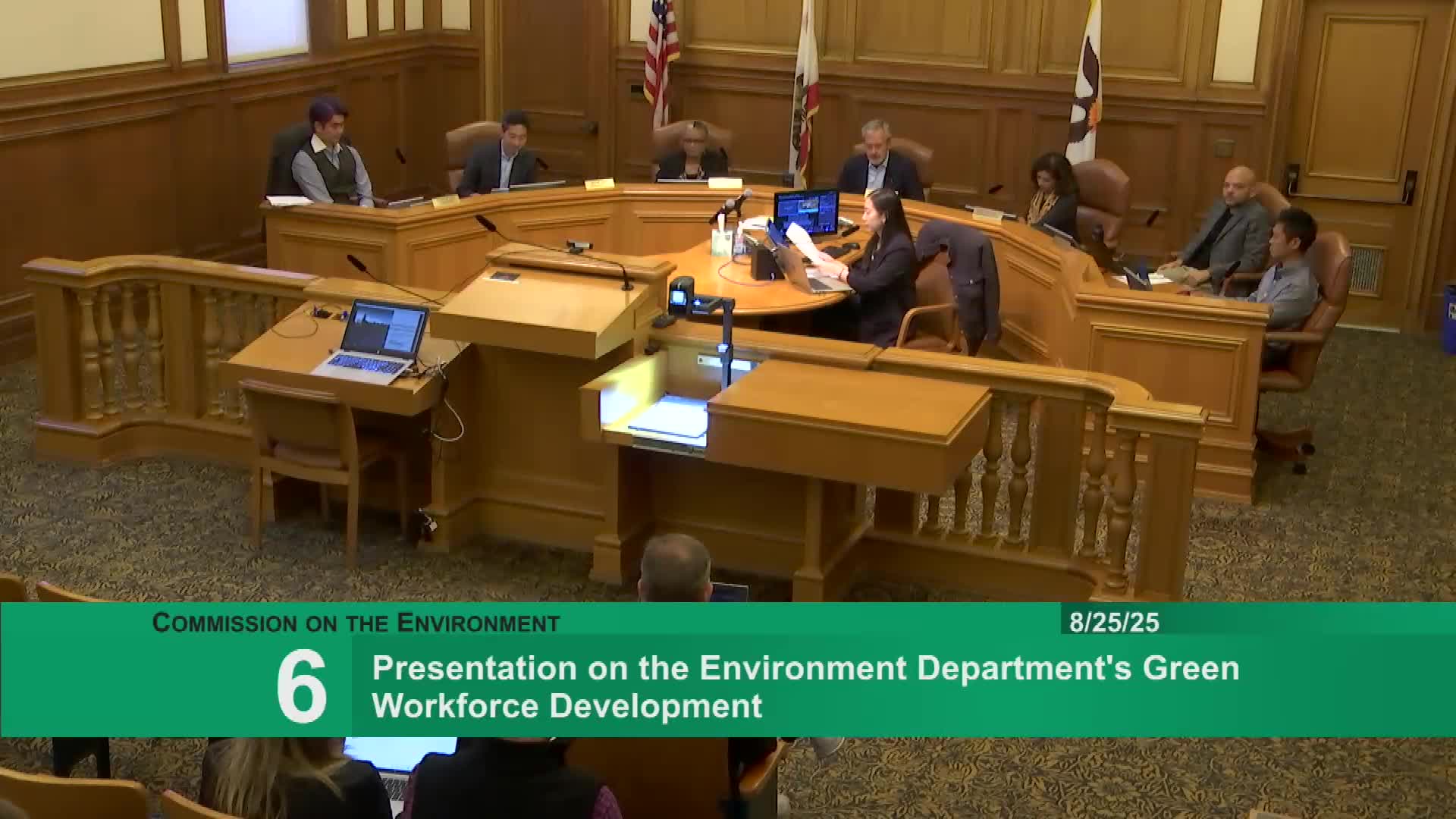BayREN business program reports rapid growth; cites measured savings for small retailers
August 25, 2025 | San Francisco City, San Francisco County, California
This article was created by AI summarizing key points discussed. AI makes mistakes, so for full details and context, please refer to the video of the full meeting. Please report any errors so we can fix them. Report an error »

San Francisco staff on Aug. 25 summarized performance and expansion plans for the Bay Area Regional Energy Network (BayREN) business program, which provides energy-efficiency upgrades and pay-for-performance incentives to small, hard-to-reach businesses across the nine-county Bay Area.
Lowell Chu, BayREN Energy Program Manager, and Cara Battista Rao, senior energy efficiency specialist leading the business program, told the Commission the program prioritizes affordability, simplicity and equity by focusing exclusively on small businesses in disadvantaged or hard-to-reach communities.
Battista Rao said the program covers many project costs through incentives tied to measured energy savings and monitors performance at the meter after installation. "We are paying incentives only for actual real energy savings, not for estimated savings," she said, describing the program’s use of smart-meter data and a pay-for-performance model.
Program metrics presented to the Commission: BayREN completed 61 projects in a partial 2023 launch and completed 218 projects in 2024. Battista Rao reported 2023 energy savings of about 570,000 kilowatt-hours and said the program was on pace to save about 1,400,000 kilowatt-hours in 2024. She said the average participating business saves about 6,600 kWh annually (roughly $2,800) and noted an estimated incentive per project around $15,000.
The program’s largest sector served is food service (bakeries, bars, restaurants), followed by grocery, convenience and liquor stores. Examples included Oak Hill Market in San Francisco, which upgraded lighting and refrigeration and is projected to save about $4,100 annually, and other small retailers reporting substantial bill reductions.
Battista Rao flagged challenges: outreach and eligibility in the three North Bay counties (Marin, Napa, Sonoma), contract delays with a third-party implementer that have since been resolved, and a small number of underperforming projects — a reason the pay-for-performance structure is important to protect public funds.
Chu and Battista Rao said current ratepayer funding runs through 2027; BayREN will submit a funding application to the California Public Utilities Commission in Feb. 2026 for a proposed 2028–2035 plan that will emphasize electrification in commercial buildings.
Commissioners asked about tracking nonenergy benefits such as safety, revenue impacts and increased foot traffic; staff said the program will ask customers to complete post-project surveys to capture nonenergy benefits in the current program year.
The Commission received the update; there were no formal votes related to this presentation.
Lowell Chu, BayREN Energy Program Manager, and Cara Battista Rao, senior energy efficiency specialist leading the business program, told the Commission the program prioritizes affordability, simplicity and equity by focusing exclusively on small businesses in disadvantaged or hard-to-reach communities.
Battista Rao said the program covers many project costs through incentives tied to measured energy savings and monitors performance at the meter after installation. "We are paying incentives only for actual real energy savings, not for estimated savings," she said, describing the program’s use of smart-meter data and a pay-for-performance model.
Program metrics presented to the Commission: BayREN completed 61 projects in a partial 2023 launch and completed 218 projects in 2024. Battista Rao reported 2023 energy savings of about 570,000 kilowatt-hours and said the program was on pace to save about 1,400,000 kilowatt-hours in 2024. She said the average participating business saves about 6,600 kWh annually (roughly $2,800) and noted an estimated incentive per project around $15,000.
The program’s largest sector served is food service (bakeries, bars, restaurants), followed by grocery, convenience and liquor stores. Examples included Oak Hill Market in San Francisco, which upgraded lighting and refrigeration and is projected to save about $4,100 annually, and other small retailers reporting substantial bill reductions.
Battista Rao flagged challenges: outreach and eligibility in the three North Bay counties (Marin, Napa, Sonoma), contract delays with a third-party implementer that have since been resolved, and a small number of underperforming projects — a reason the pay-for-performance structure is important to protect public funds.
Chu and Battista Rao said current ratepayer funding runs through 2027; BayREN will submit a funding application to the California Public Utilities Commission in Feb. 2026 for a proposed 2028–2035 plan that will emphasize electrification in commercial buildings.
Commissioners asked about tracking nonenergy benefits such as safety, revenue impacts and increased foot traffic; staff said the program will ask customers to complete post-project surveys to capture nonenergy benefits in the current program year.
The Commission received the update; there were no formal votes related to this presentation.
Don't Miss a Word: See the Full Meeting!
Go beyond summaries. Unlock every video, transcript, and key insight with a Founder Membership.
✓
Get instant access to full meeting videos
✓
Search and clip any phrase from complete transcripts
✓
Receive AI-powered summaries & custom alerts
✓
Enjoy lifetime, unrestricted access to government data
30-day money-back guarantee

